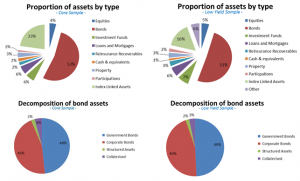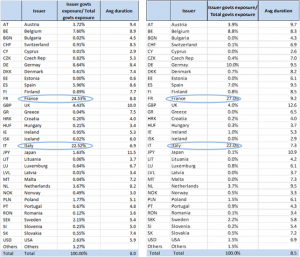
Nell’articolo “I nuovi strumenti di finanziamento per le piccole e medie imprese”, pubblicato su questo sito, si è illustrato come il legislatore -per porre rimedio al c.d. credit crunch e alla conseguente difficoltà delle piccole e medie imprese di accedere al credito bancario- abbia rinnovato la disciplina in materia di cambiali finanziarie ed obbligazioni al fine di consentire alle piccole e medie imprese di reperire fonti di finanziamento alternative a quelle bancarie.
La stessa finalità persegue il decreto legge n. 91/2014 (convertito con la legge n. 116 dell’11 agosto 2014, di seguito “Decreto Competitività”), in cui il legislatore ha ampliato la tipologia degli intermediari finanziari cui è consentito erogare credito alle imprese. Il Decreto Competitività, infatti, ha previsto la possibilità per le imprese assicurative, le società di cartolarizzazione dei crediti e gli organismi di investimento collettivo del risparmio, di concedere direttamente finanziamenti alle imprese. Tale opportunità potrà, senza dubbio, favorire il contributo di questi investitori al finanziamento dell’economia.
In questo articolo, si approfondisce la disciplina delle erogazioni di finanziamenti da parte delle imprese di assicurazione, anche al fine di evidenziarne le criticità.
1. La nuova disciplina
L’art. 22 del Decreto Competitività ha modificato l’art. 38 del d.lgs. 239/2005 (di seguito “Codice delle Assicurazioni”) il cui nuovo secondo comma stabilisce i presupposti essenziali per l’erogazione dei finanziamenti da parte delle imprese di assicurazione, demandando all’IVASS l’emanazione della disciplina di dettaglio. Conseguentemente, l’IVASS ha emanato il 22 ottobre 2014 il provvedimento n. 22 (di seguito “Provvedimento n. 22”) che ha modificato il Regolamento n. 36 del 2011 (“concernente le linee guida in materia di investimenti e di attivi a copertura delle riserve tecniche di cui agli articoli 38, comma 2, 39, comma 3, 40,comma 3, 42, comma 3 e 191, comma 1, lettera D9 del decreto legislativo 7 settembre 2005, n. 209 – Codice delle Assicurazioni Private” di seguito “Regolamento n. 36”) e che ha precisato, ulteriormente, i limiti e le condizioni per tali finanziamenti.
La nuove disposizioni, innanzitutto, circoscrivono l’ambito dei prenditori alle imprese con esclusione delle c.d. microimprese (di cui all’art. 2, par. 1, della Raccomandazione 2003/361/CE della Commissione Europea) e il nuovo articolo 38 del Codice delle Assicurazioni fissa, come anticipato, le condizioni essenziali per l’erogazione dei finanziamenti, ossia:
- i prenditori dei finanziamenti siano individuati da una banca o da un intermediario finanziario iscritto nell’albo di cui all’ articolo 106 del TUB;
- la banca o l’intermediario finanziario trattenga un interesse economico nell’operazione, pari ad almeno il 5 per cento del finanziamento concesso, trasferibile anche a un’altra banca o intermediario finanziario, fino alla scadenza dell’operazione;
- il sistema dei controlli interni e gestione dei rischi dell’impresa sia adeguato e consenta di comprendere a pieno i rischi, in particolare di credito, connessi a tale categoria di attivi;
- l’impresa sia dotata di un adeguato livello di patrimonializzazione.
Bisogna sottolineare che l’art.38, comma 2 lettera d), del Codice delle Assicurazioni, consente alle imprese assicurative, in deroga a quanto disposto dalle lettere a. e b. di cui sopra, di selezionare autonomamente i prenditori. In questo caso, tuttavia, l’erogazione del finanziamento è subordinata ad apposita autorizzazione dell’IVASS.
Ulteriori e più dettagliate condizioni sono previste dal Regolamento n. 36, così come modificato dal Provvedimento n. 22, che individua la procedura di erogazione, i limiti percentuali massimi di finanziamento, gli obblighi informativi dell’impresa di assicurazione ed i poteri dell’IVASS.
1.1.Procedura di erogazione
Il Regolamento n. 36 stabilisce che le imprese di assicurazione che intendono investire i propri attivi in finanziamenti, predispongano un piano di attività che contenga informazioni sulle caratteristiche del finanziamento. Tale piano deve contenere, tra l’altro:
- le modalità di attuazione dell’attività di finanziamento, se in via diretta o con l’ausilio, nella fase di selezione, di una banca o di un intermediario finanziario iscritto nell’albo di cui all’articolo 106 del TUB;
- i criteri per la selezione dei prenditori dei finanziamenti diretti, per la concessione e gestione dei finanziamenti diretti nonché le modalità e la periodicità della revisione di tali criteri alla luce dell’andamento dell’attività;
- la definizione degli importi per l’attività di investimento in finanziamenti e dei limiti di concentrazione per singolo emittente e per gruppo dei prenditori.
Il contenuto del piano delle attività sarà, ovviamente, più dettagliato nell’ipotesi in cui la compagnia assicurativa decida di non avvalersi del supporto di una banca, in questo caso, infatti, questa dovrà descrivere gli assetti organizzativi attuati per lo screening e il monitoring dei prenditori e dimostrare le proprie capacità di comprendere e gestire il rischio di credito, utilizzando le best practices bancarie.
Tale piano deve essere, successivamente, inviato all’IVASS la quale, ai fini del rilascio entro 90 giorni dell’autorizzazione, attua una valutazione sulla coerenza del piano con: (i) la strategia degli investimenti dell’impresa, con le caratteristiche degli impegni a fronte dei quali l’investimento i finanziamenti è attuato; (ii) con il livello di patrimonializzazione dell’impresa di assicurazione (tenendo presente i contenuti del futuro regime di vigilanza definito dalla Direttiva 2009/138; di seguito “Solvency II”); e (iii) con il sistema di gestione dei rischi in essere presso l’impresa (tenendo sempre presente i parametri di Solvency II). Ai fini di questa valutazione, l’IVASS tiene conto anche del livello e della permanenza temporale dell’interesse trattenuto dalla banca o dell’intermediario finanziario coinvolto nell’operazione di finanziamento.
In questi 90 giorni l’IVASS può, altresì, chiedere all’impresa di assicurazione di modificare il piano anche imponendo condizioni o limiti quantitativi all’attività di finanziamento pari od inferiori a quelli previsti nel Regolamento n. 36.
Ottenuta l’autorizzazione dell’IVASS, che può manifestarsi anche con il silenzio-assenso, l’organo amministrativo dell’impresa di assicurazione potrà approvare definitivamente il piano dei finanziamenti e procedere all’erogazione. È necessario sottolineare che il Provvedimento n. 22, nel caso in cui l’impresa di assicurazione decida di individuare autonomamente i prenditori, esclude l’operatività del meccanismo del silenzio-assenso, per cui l’IVASS dovrà necessariamente emettere un provvedimento.
1.2. Limiti percentuali massimi di finanziamento
L’entità del finanziamento che può essere erogato dall’impresa di assicurazione, varia a seconda della circostanza che i prenditori siano selezionati da una banca o da un intermediario finanziario iscritto all’albo di cui all’art. 106 del TUB, ovvero siano finanziamenti per i quali l’impresa esercita in via autonoma l’attività di individuazione dei prenditori.
Nel primo caso, i finanziamenti sono suddivisi, sulla base di determinati requisiti, in tre classi ad ognuna delle quali corrisponde un limite percentuale massimo di finanziamento delle riserve tecniche.
La prima classe è formata da finanziamenti che rispondano ai seguenti requisiti:
a) la banca o l’intermediario finanziario trattenga fino alla scadenza dell’operazione una percentuale del finanziamento non inferiore al 5%, e sia titolare di diritti non superiori a quelli dell’impresa di assicurazione, nei confronti dei prenditori dei finanziamenti, con riguardo al pagamento degli interessi ed alla restituzione del capitale;
b) i finanziamenti siano concessi a soggetti dotati di elevato merito creditizio;
c) il bilancio dell’impresa destinataria del finanziamento sia certificato da parte di una società di revisione debitamente autorizzata.
Al ricorrere di tali condizioni, l’impresa di assicurazione può finanziare l’impresa entro il limite massimo del 5 per cento delle riserve tecniche da coprire.
La seconda classe è, invece, formata da finanziamenti che sono in possesso del requisito di cui alla lettera a) che precede, ma che, tuttavia, non sono dotate di un levato merito creditizio e/o non abbiano il bilancio revisionato.
In questo caso la compagnia assicurativa potrà finanziare l’impresa entro il limite del 2,5 per cento delle riserve tecniche da coprire.
La terza ed ultima classe è composta da finanziamenti destinati ad essere erogati ad imprese che non posseggono nessuno dei requisiti di cui ai punti a), b) e c) che precedono. In questi casi l’assicurazione potrà erogare un finanziamento massimo pari all’1 per cento delle riserve tecniche da coprire.
Nel secondo caso, ovvero quando i prenditori non sono selezionati da una banca o da un intermediario, gli attivi che potranno essere destinati a copertura delle riserve tecniche saranno indicati dall’IVASS nel provvedimento che autorizza l’erogazione (Cfr. paragrafo 1.1.)
L’IVASS, nel Regolamento n. 36, specifica, infine, che tutti finanziamenti non possono superare il limite complessivo del 5 per cento delle riserve tecniche e che, in ogni caso, gli stessi non possono essere erogati in favore di soggetti legati all’impresa di assicurazione da rapporti di controllo o partecipazione, né sono permessi investimenti in finanziamenti deteriorati di cui alla Circolare della Banca d’Italia n. 272/2008.
1.3. Comunicazioni alla Banca d’Italia e agevolazioni fiscali
Alla luce delle novità introdotte, il legislatore ha previsto l’obbligo, per le assicurazioni che erogano finanziamenti, di inviare informazioni periodiche alla Banca d’Italia la quale disciplinerà, altresì, i termini e le modalità di partecipazione delle compagnie assicurative alla Centrale dei Rischi, al fine di poter costantemente monitorare l’esposizione creditizia di tali soggetti.
Infine, per incentivare l’erogazione di finanziamenti da parte delle imprese di assicurazione, il legislatore ha previsto, altresì, alcune agevolazioni fiscali. In particolare, ha esteso a tali soggetti il regime dell’imposta sostitutiva previsto dall’art. 17 del decreto del Presidente della Repubblica n. 601/1973 ed ha aggiunto il comma 5-bis all’art. 26 del Decreto del Presidente della Repubblica n. 600/1973, che estende il regime dell’esenzione dalla ritenuta alla fonte sugli interessi derivanti da finanziamenti a medio lungo termine alle imprese.
Conclusioni
Le ragioni che hanno spinto il legislatore a prevedere la possibilità anche per le imprese di assicurazione di erogare finanziamenti, vanno ricercate nell’esigenza di trovare soluzioni alternative al credito bancario.
La scelta legislativa, seppure coraggiosa, non è esente da rischi.
Le imprese assicurative, infatti, non risultano attualmente dotate delle competenze necessarie a gestire i rischi connessi all’attività di erogazione del credito e soprattutto risultano sprovviste di sistemi idonei a valutare correttamente il c.d. merito creditizio, attività da sempre appannaggio delle banche.
Forse, proprio questa preoccupazione spiega la disciplina di maggior favore accordata dal legislatore ai finanziamenti erogati a prenditori individuati da una banca o da un intermediario finanziario, piuttosto che a quelli erogati a prenditori individuati autonomamente dall’assicurazione.
Si è visto, infatti, come in quest’ultimo caso il quantum dell’erogazione sia disposto volta per volta dall’IVASS e come sia richiesto, ai fini dell’autorizzazione, un contenuto più dettagliato del piano delle attività.
Infine, è stato evidenziato che la nuova disciplina potrebbe configurare un rischio di “selezione avversa” (Giorgio Gobbi, 2014) ed anche di “arbitraggio regolamentare” (Salvatore Rossi, 2014).
Da un lato, infatti, le banche potrebbero “rifilare ad un’assicurazione i crediti più deteriorati e ritirarsi subito dopo dalla partnership”; dall’altro, si è evidenziato come nei gruppi misti bancario-assicurativi potrebbero essere trasferiti finanziamenti dai soggetti bancari a quelli assicurativi al solo scopo di eludere la disciplina in materia di patrimonializzazione delle banche.
Si tratta, tuttavia, di difficoltà che potranno essere agevolmente superate non appena le assicurazioni si doteranno di opportuni presidi di governance, capaci di valutare il merito creditizio e, non appena, sarà completato il processo di recepimento di Solvency II, attraverso la quale potranno essere colmate le differenze normative tra il settore bancario e quello assicurativo.













